Hopes and Dreams, Heat and Humidity
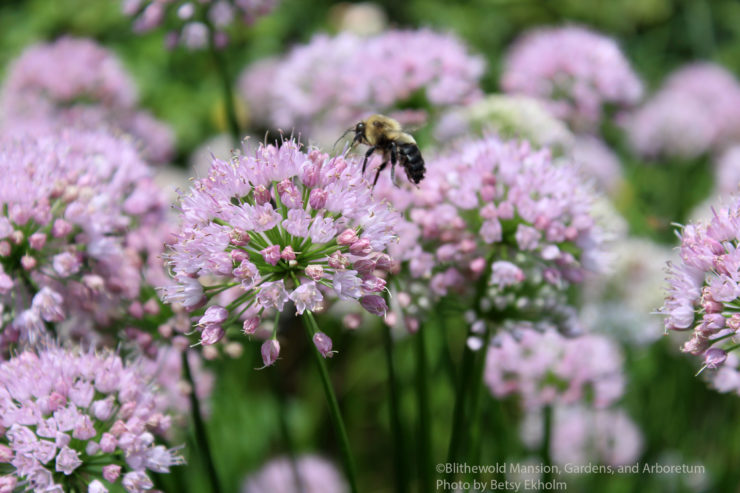
When rising temperatures and humidity levels make me question my decision to work outside for a living, the gardens we create here at Blithewold remind me that I made the right choice. Anyone who gardens (professionally or otherwise) will tell you that a garden is a labor of love. We pour ourselves into these spaces with creativity, strategic planning, and sweat in the hopes that our efforts will be rewarded. And indeed they are.
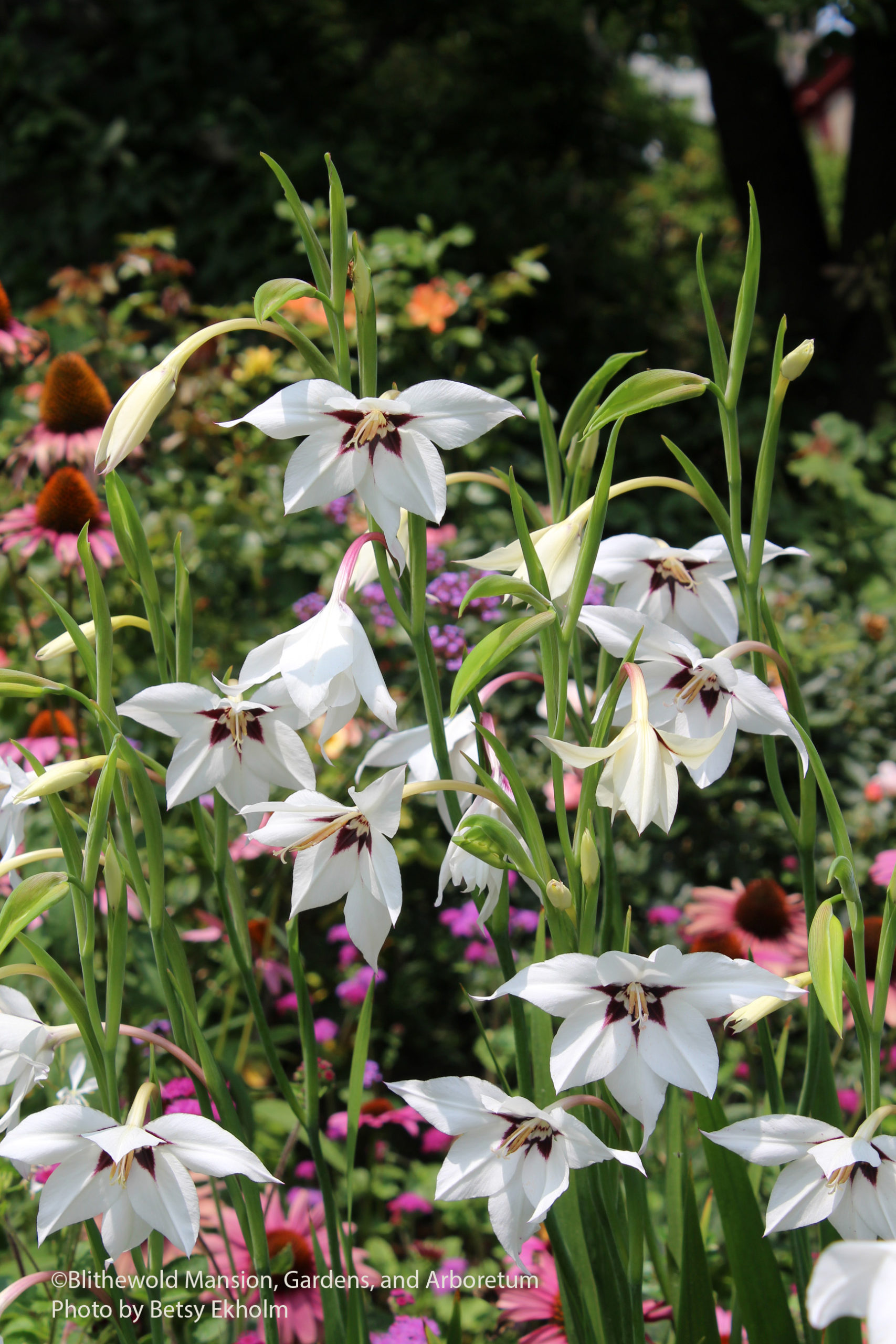
Both peacock gladiolus (above) and larkspur (below) are plants that took months of planning and hoping. I began dreaming of these flowers in the same month. All the way back in March I ordered 100 corms of peacock gladiolus and we potted them up in the greenhouse when they arrived. Then it was a game of timing to bring them outside to acclimate and eventually be planted in the Rose Garden. Now four months later they are in glorious flower, enjoyed by bees and visitors alike.
Larkspur was a flower that I had struggled with for years. I had tried sowing the seeds in February in the garden with no luck (probably disturbed them before they had a chance to germinate). This year I was determined to win out and see these beauties in bloom. I used a large cell tray and sowed the seeds in early March. I then left the entire tray outside in all types of weather, my only action to ensure that they did not dry out completely. They eventually germinated after months of waiting, we planted them in the Cutting Garden in June, and now they are in flower! The delicate color of the blooms was worth the struggle.
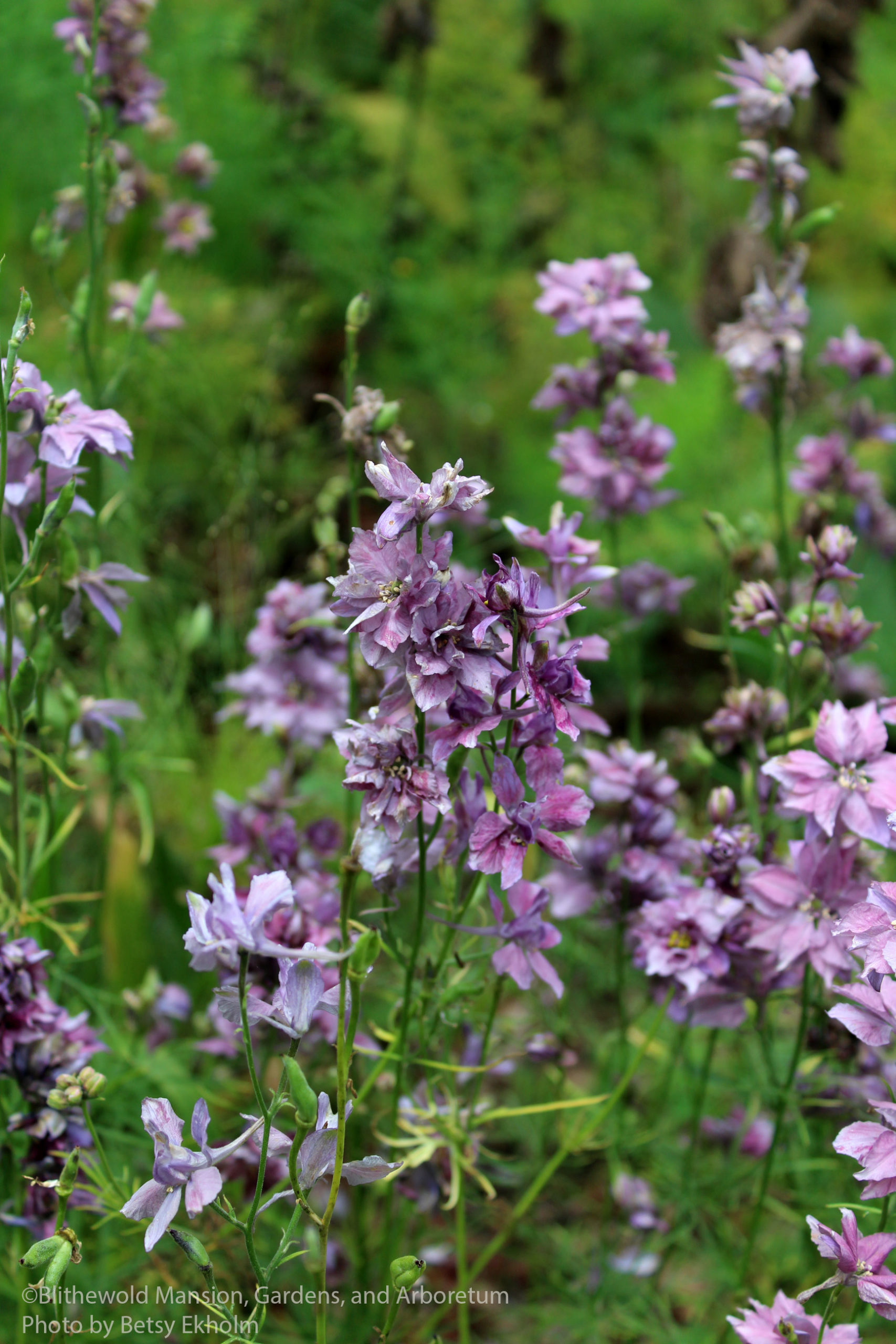
This principle of the bloom being worth the struggle is something that has gotten me through many gardening ups and downs. Sometimes it takes years and not simply months for a plant to come into its own.
Other times, it takes years to realize that a plant I want to work in the garden does not work after all. The box-leaved euonymus in the North Garden is one such example. We planted it six years ago along the corners of the garden to set off the then-new containers and to provide definition. However, the deer discovered it and the insects did, too. It did not fare well after year four. We finally made the decision that it had to go; and, Julia, Becca, and I dug them out and bid them farewell. In their place on the main corners we went for a softer, more romantic edge. Alyssum ‘Snow Princess’ blends beautifully with purple vinca in front of the containers in the North Garden. This is a temporary solution as both vinca and Alyssum are annuals. It allows us to take time to consider if we would like a more permanent plant there and, if so, to find a source of what we would like.
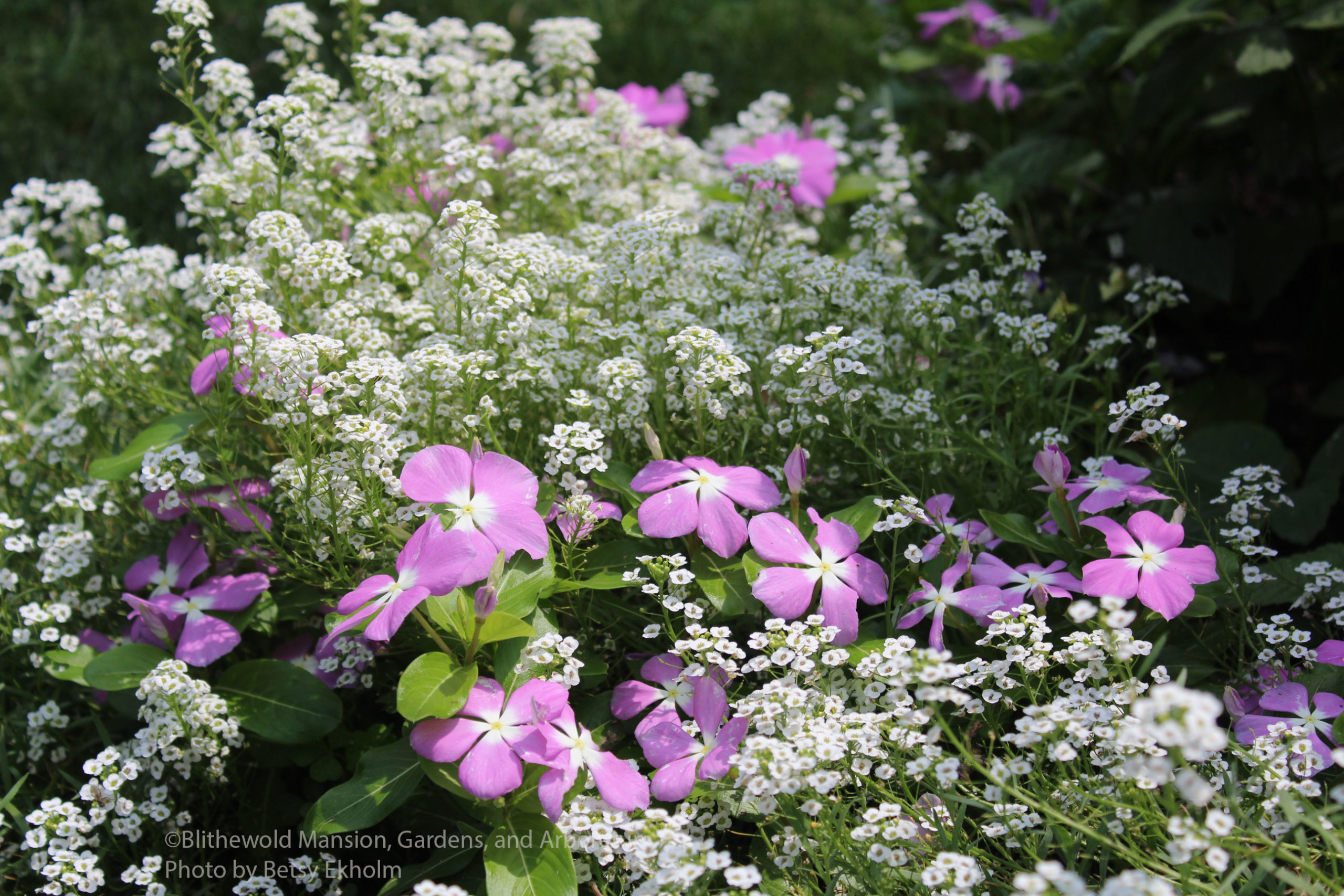
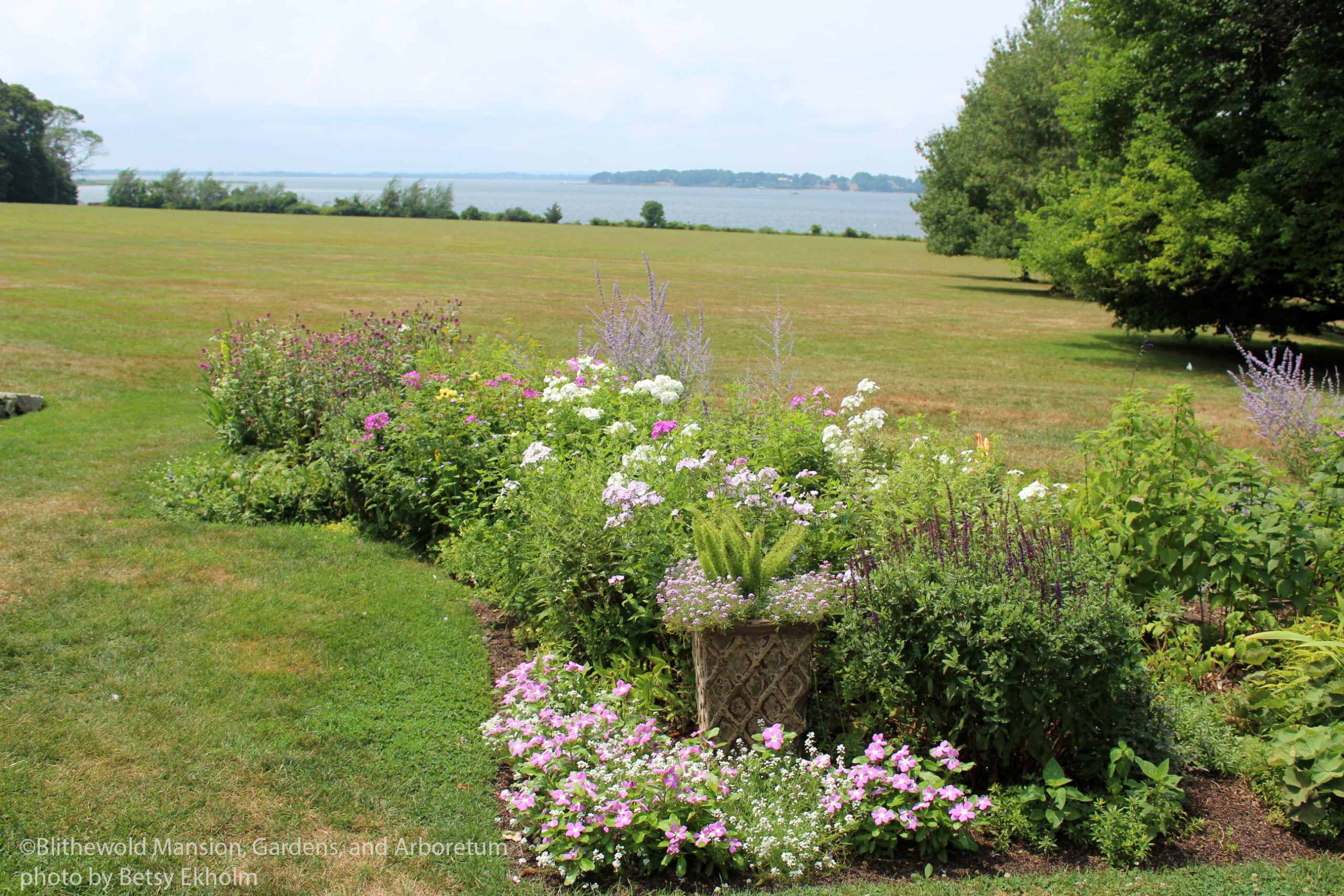
Some choices are easy for me to make. Planting flowers that will attract insects to the garden is always a resounding yes. Zinnias are a mainstay in the Cutting Garden for this reason, although I love their vibrant colors and unflinching cheerfulness, too. I often see butterflies and bumblebees visiting the zinnias.
Several years ago we planted the Rhode Island native blue vervain (Verbena hastata) in the Cutting Garden. It decidedly did not want to stay where it was planted. The year after we planted it we were dismayed that it seemed to have disappeared. Not so, in fact. Instead it migrated to many other locations (as any good verbena does). I have even found some plants all the way across the property in the Rose Garden.
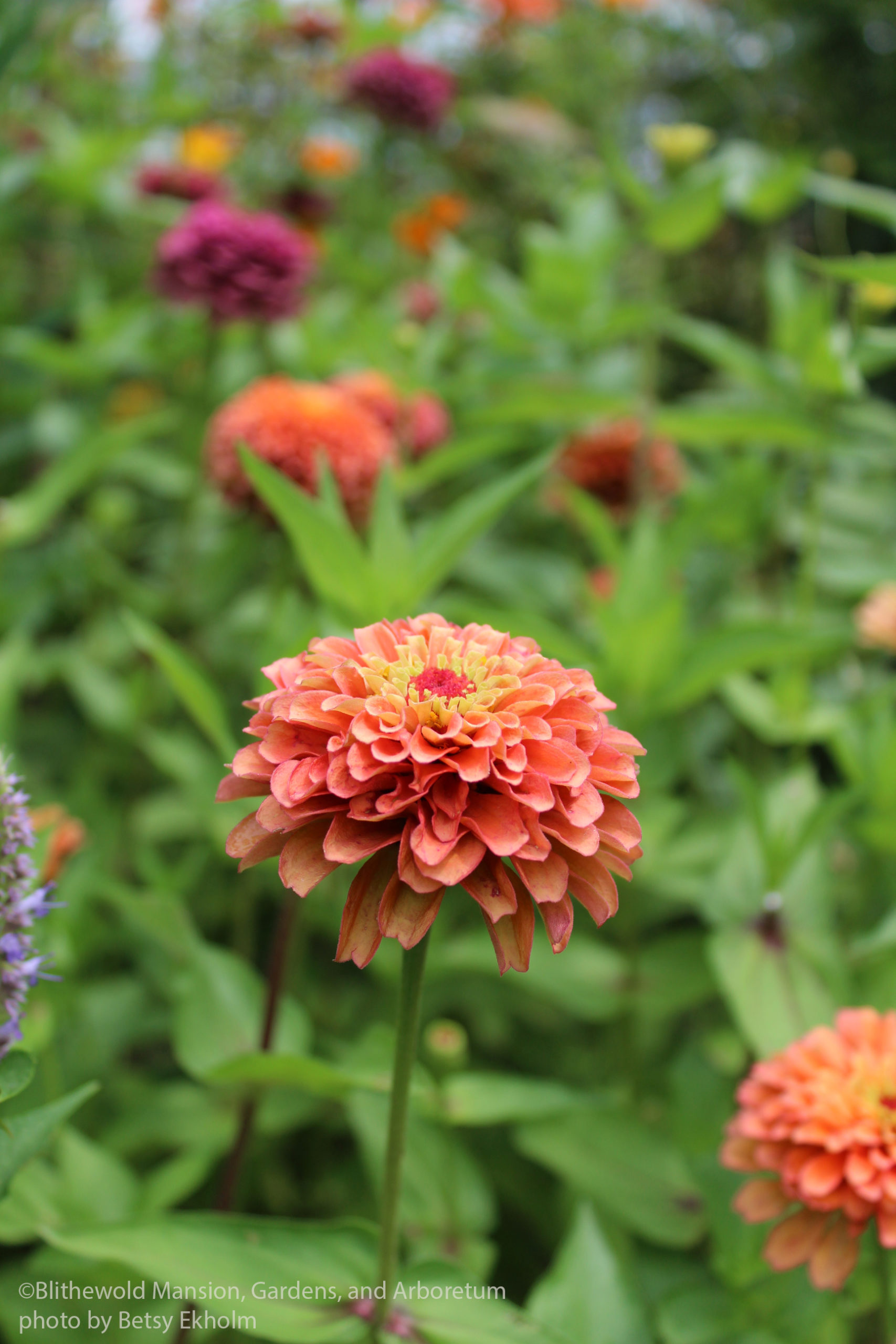
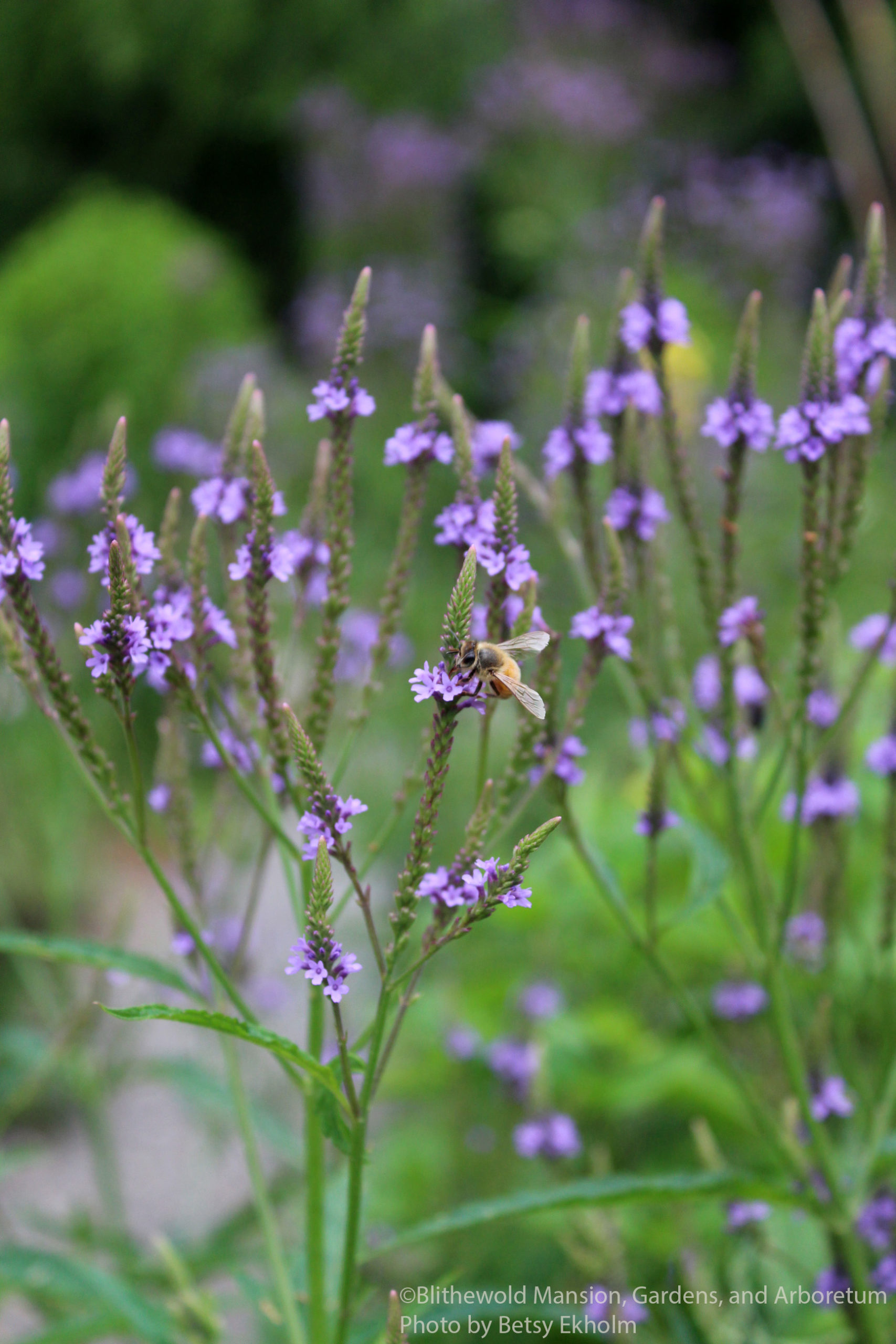
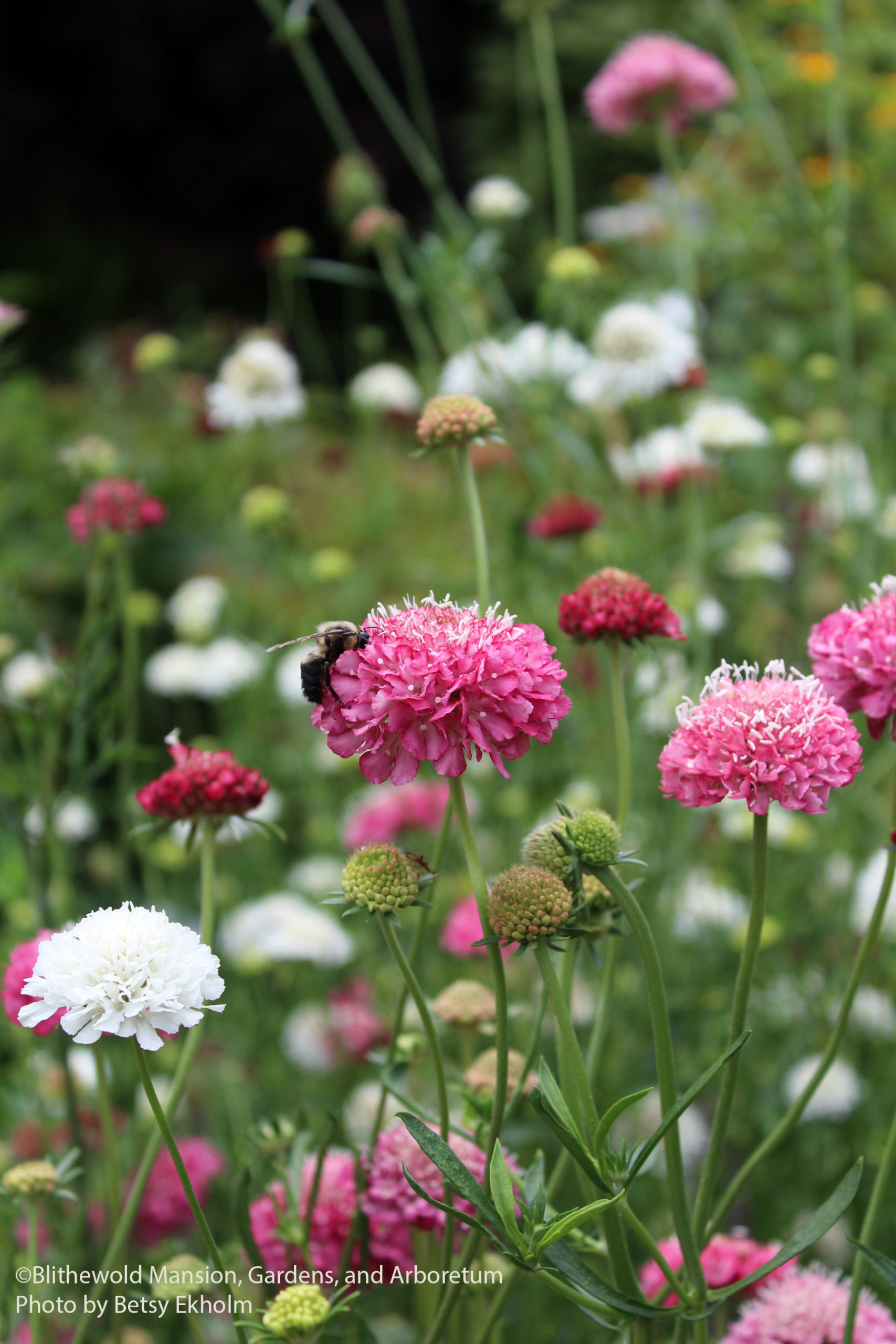
One annual that is very well behaved is scabiosa. Not only that, but the varieties that I started from seed and that are now in bloom in the Cutting Garden are a hub of activity. There are always pollinators flitting and buzzing around these blossoms. The colors of the flowers alone are making my heart sing, but to see the insects enjoy them so thoroughly is truly the cherry on top.
There are many more flowers and combinations of blooms in the gardens – much more than I have the space to tell you about here. These highlights I have chosen are a few of my favorites this week. May they remind you of the joys of gardening and of simply being in the garden.
Happy Summer!
